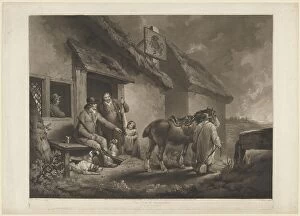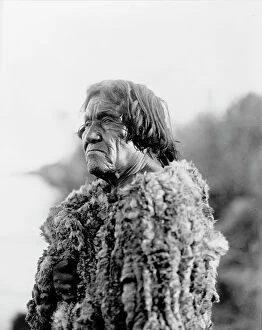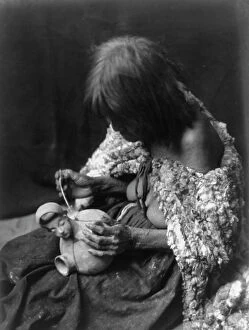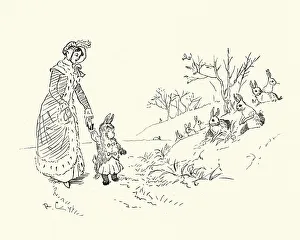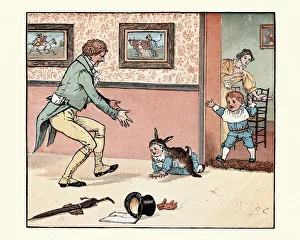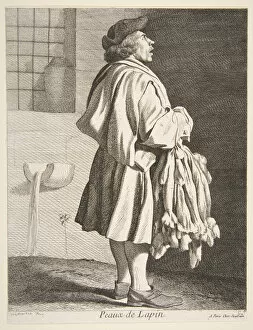Rabbit Skin Collection
A nod to the past: Edward Sheriff Curtis's captivating portrait of a Mohave man, clad in a primitive robe made of rabbit skins
All Professionally Made to Order for Quick Shipping
A nod to the past: Edward Sheriff Curtis's captivating portrait of a Mohave man, clad in a primitive robe made of rabbit skins, harks back to an era where nature's resources were essential for survival. This image, taken in 1907, is a testament to the ingenuity and resilience of indigenous cultures. The use of rabbit skins as clothing is echoed in various historical artworks, such as Philibert Louis Debucourt's "Le Md. De Peau de Lapin" and Anne-Claude-Philippe de Caylus's "Rabbit Pelt Peddler." In literature, the nursery rhyme "Bye, baby Bunting" describes a baby being wrapped in rabbit skin, reflecting the warmth and protection these skins provided. The image of a rabbit-skin-wrapped baby also appears in Randolph Caldecott's illustrations. Even in the streets of Paris, as depicted in an engraving from "The Street Cries of Paris," rabbit skins were peddled as valuable goods. These historical references show the enduring significance of rabbit skins throughout history.


